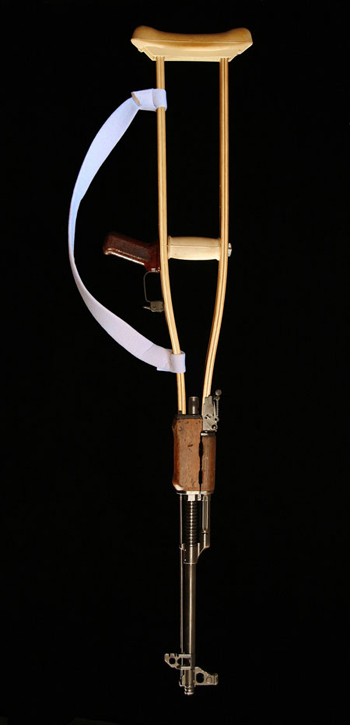Nida Sinnokrot
AKh-48, 2008
AK-47 parts, wooden crutch, sling (122cmx30cm)
The Kalashnikov remains the most enduring icon of the 20th century anti-colonial movement. It testifies to heroic resistance from Vietnam to Algeria and beyond, and to indomitable and enduring struggle under arms till the bloody end. The AK 47 is the weapon that the colonized world had waited for. It’s become recognized as the great equalizer and as such its status as the maximum icon of decolonization is both representative and true.
AKh-48 reexamines the gun as icon in a Palestinian context. Said has noted that the primacy of armed struggle and the fetishized appropriation of slogans and militant postures from the anti colonial wars of Algeria and Vietnam came at the cost of more important cultural and political aspects of the liberation movement. This has lent an important propaganda advantage exploited successfully by the Israelis whereby Palestinian self-defense and resistance has become ‘terrorism.’ As a result Palestinians are asked to believe that their tragedy is closed, that they are both victim and architect at once.
The incorporation of the crutch in this work creates a creolized icon that ponders the circularity of Palestinian victim hood with its simultaneous heroism. The persistence of this dialectic existing within the scheme of Palestinian resistance describes reality but pinpoints the frail vulnerabilities of the victim/hero interdependence. “Aakh” in Arabic is a sound of anguish, incorporated here it maintains this contradiction and ensures that these two impulses, victim hood and heroism, remain in equilibrium.
As such AKh-48 creates a new and twist-proof icon for resistance but it’s also a brake against the folly of glorifying armed struggle. Keeping in check the victim/hero mentality is a faculty to develop and is something we should “never part” with.
